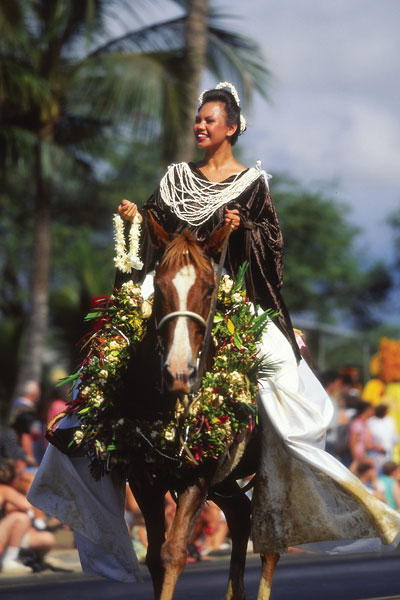Story by Jill Engledow
 Exuberant and horse-crazy, Hawaiian women of the nineteenth century loved to ride at breakneck speed with their skirts flying behind them. What one writer called the “gay, winged dress” of these early horsewomen was the pa‘u, a distinctively Hawaiian riding costume now seen mostly in parades.
Exuberant and horse-crazy, Hawaiian women of the nineteenth century loved to ride at breakneck speed with their skirts flying behind them. What one writer called the “gay, winged dress” of these early horsewomen was the pa‘u, a distinctively Hawaiian riding costume now seen mostly in parades.
The pa‘u—a skirt or sarong—was the primary garment of women in pre-Contact Hawai‘i. When horses arrived, wahines chose to ride astride, rather than sidesaddle, hitching up the skirts of their long western-style dresses and tucking them in around their legs. To protect their dresses as they rode joyfully through the dusty streets of Honolulu or on muddy country roads, they wrapped lengths of fabric in the traditional pa‘u style. Travel writer Isabella Bird described pa‘u riders in 1875 as “flying along astride, barefooted, with their orange or scarlet riding dresses streaming on each side beyond their horses’ tails, a bright kaleidoscopic flash of bright eyes, white teeth, shiny hair, garlands of flowers. . . .”
In the early 1900s, pa‘u riders became a regular feature of parades, with both rider and horse often decorated in the colors associated with the various islands. Next time you attend a Hawai‘i parade, watch for a lovely pa‘u rider wearing Maui Island’s pink, with flowers and lei adorning horse and rider as her satin pa‘u flows gracefully in the breeze.





